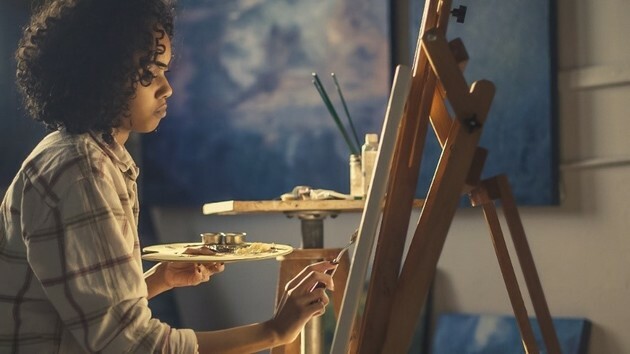Mosaic is an ancient decorative art that brings together small pieces of different colors to form a large figure. From the Greek, the term mosaic (mouseîn) is related to the muses.
They represent the close collage of small pieces, forming a visual effect (be it a drawing, figure, representation) which involves organization, combination of colors, materials and geometric figures, as well as creativity and patience.
Until today, mosaic is used in the arts and can be formed by different types of materials (tesserae) in different formats: pieces of glass, plastic, paper, ceramics, porcelain, precious stones, marble, granite, ivory, grains, beads, shells, tiles, tiles, among others.

In addition to being used in art pieces, it is often associated with architecture and decoration of environments (indoor and outdoor).
One of the most notorious examples in Brazil are the wave-shaped mosaics on the Copacabana sidewalk in Rio de Janeiro.
In addition to the Copacabana sidewalk, we can find several mosaics in churches, museums, avenues, palaces in Brazil and in handicraft items.
The Quinta da Boa Vista (formerly the São Cristóvão Palace), the Municipal Theater and the National Museum of Fine Arts, all in Rio de Janeiro, deserve special mention.
Mosaic History
Musiva Art, as it is called, dates back centuries and probably appeared with the Mesopotamians in 3000 BC. Ç.. In the West, the Mayans and Aztecs already knew the mosaic, so there is controversy as to its emergence.
The “Standard of Ur” (produced circa 3500 BC C.) is considered the oldest mosaic found until today, belonging to the region where the ancient Mesopotamians (Sumerians) lived.

In addition to them, the Byzantines, Egyptians, Persians, Greeks and Romans adorned temples, churches, sarcophagi, sidewalks and public spaces with this art.
Byzantine churches are one of the greatest examples of mosaics in antiquity, which were copied by later civilizations.
Byzantine mosaics had a symmetrical and monumental character, and they were responsible for disseminating this art, as well as its techniques.
Although they were one of the first to explore this field of arts, it was in the Greco-Roman period that musical art reached its apogee.
The themes most explored by artists who made up musical art in antiquity were everyday, sacred, war, historical, mythological and landscape scenes. Certainly, the great mosaics were produced by a group of people.

You can find many of these mosaics made in antiquity, for example, in St. Peter's Basilica in Rome; Orthodox Basilica of Monreale, Sicily; St. Mark's Church in Venice; Church of St. Sophia in Kiev; Daphne Monastery in Athens, among others.
With the arrival of modernity, mosaics were replaced by various painting and sculpture, while it was categorized as a “minor art”, alongside craftsmanship and tapestry.
However, in contemporary times, many artists have resumed the construction of mosaics, especially in murals, covering their field of action from the most varied figurative and abstract themes.
Many countries in Latin America are rich in artists who make up the mosaics, for example Mexico and Peru.
Mosaic Technique
Currently, the small pieces that formed a design are made on a cement base (mortar) and can adorn floors, walls and many types of surfaces.
In addition to the cement base to adhere the pieces, a grout is later used to give the final finish.
Note that many ancient peoples used surfaces such as wood, ceramics and leather and a type of vegetable resin to glue the pieces.
Complement your research by reading the articles:
- Byzantine art
- greek art
- Roman art
- Egyptian art
Fun Facts: Did you know?
 Park Guell, Barcelona, Spain
Park Guell, Barcelona, Spain
One of the greatest representatives of modern architectural and musical art is the Catalan artist Antonio Gaudí (1852-1926). We can find most of his works around the city of Barcelona, for example, the Sagrada Família Church and the Park Güell.



